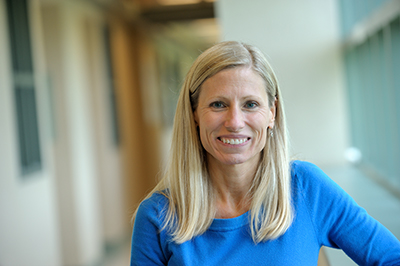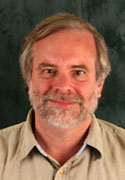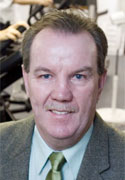"They say that you cannot completely prevent loss of muscle mass and strength over the lifespan, but with resistance training you can reduce the rate of loss," said Marni Boppart, associate professor of kinesiology and community health and member of Beckman’s Bioimaging Science and Technology Group.
An exercise physiologist, Boppart examines the underlying factors for muscle growth and how exercise affects it. She joined the University of Illinois in 2007 and has worked with researchers at the Beckman Institute who have pioneered studies on healthy aging, such as Art Kramer, Eddie McAuley, and Neal Cohen.

In the Molecular Muscle Physiology Laboratory, Boppart continues this tradition, taking a look at whether stem cells can regulate muscle loss and growth.
"We have an interest in understanding how muscle responds to exercise and which cellular components contribute to the increase in repair and growth with exercise," she said. "But the primary goal of our lab really is to have some understanding of how we can rejuvenate the aged muscle to prevent the physical disability that occurs with age and to increase quality of life in general as well."
The work couldn’t be more timely.
"We are on the brink of an explosion in the population of individuals over the age of 65. Many individuals will lose, on average, the last 15 years of their life to disability, likely in a residential facility. That loss of independence is tough for anyone. But there is a larger societal issue here: How can we care for so many disabled aged individuals? The numbers are unsustainable given the framework for health care that currently exists."
Strong Training
While studying molecular, cellular, and developmental biology as an undergraduate at the University of New Hampshire, Boppart joined the Air Force ROTC and graduated as top cadet and corps commander. Her first position out of college was as an office and aerospace physiologist, where she trained aircrew members about the hazards of the high-altitude environment, including hypoxia and G forces. However, teaching about the core principles of physiology left her with more questions about human performance and resilience to stress.
"While we know that regular physical activity is important to preserve health and prevent disease, we still know very little about the molecular and cellular events that take place in muscle, bone, and the brain that account for these beneficial outcomes."
Her early research during graduate school at Boston University allowed her to work with researchers at Harvard Medical School to identify intracellular signaling pathways activated by exercise in human skeletal muscle. They published the first series of papers that described changes that could occur in muscle in response to exercise.
Boppart’s research at Illinois continues to answer questions related to how muscles can decline or improve.
"There are two possibilities: there’s this loss of the ability for the myofiber [single muscle cells] to sense stress, but there’s also a theory that there are stem cells, stromal stem cells, in the tissue environment outside the fiber that strongly regulate that process of growth," said Boppart.
Doing the Heavy Lifting
Boppart and her colleagues at Illinois have been working on trying to rejuvenate the skeletal muscle of aged mice using the stromal (also known as mesenchymal) stem cells. Early work showed that even the most potent young stem cells became dysfunctional and were ineffective in aged skeletal muscle following transplantation.
However, if the researchers "exercise" the stem cells by mechanically straining them prior to injection, they can preserve cellular function and subsequently improve nerve structure and muscle strength in aged mice.
The cells release various factors--growth, neurotrophic, and immunologic--that can enhance the growth process within the muscle fiber and, once released in the circulatory system, can also impact the brain. Boppart’s work with Justin Rhodes, professor of psychology and member of the NeuroTech Group, has observed new neuron formation in the brain of aged animals, suggesting a link between muscle and higher cognitive function.
Beckman has been the ideal place for Boppart and Rhodes to join forces in their investigations.
"This is the merging of two areas: someone who is an exercise physiologist with the tools to manipulate the muscles and study how exercise affects muscle physiology, and someone who is interested in the effects of exercise on the brain," said Rhodes. "I don’t have the tools or knowledge to know how to stimulate or contract the muscles--that’s all her area. But she wouldn’t have been able to determine what her manipulations are doing in the brain without my contribution, so there’s two completely different sort of fields that are merged together to produce an example that we couldn’t do independently, but something that could have quite a big impact."
Exercise the Options
Both researchers are interested in exploring this concept further.
"So many questions remain," said Boppart. "Which stem cell type is most effective, where should the source be obtained (fat appears to be a popular candidate), how should the cells be handled prior to transplantation, and of course, what are the potential negative outcomes associated with each?
"I don’t believe that stem cell therapy can or ever will replace the benefits of physical activity for achieving optimal health and wellness. But, it will be increasingly important to take advantage of what we learn about the body’s response to exercise to help those who can’t."


